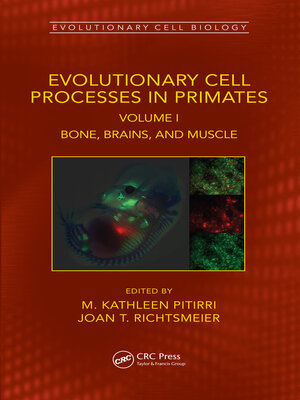Evolutionary Cell Processes in Primates
ebook ∣ Bone, Brains, and Muscle, Volume I · Evolutionary Cell Biology
By M. Kathleen Pitirri

Sign up to save your library
With an OverDrive account, you can save your favorite libraries for at-a-glance information about availability. Find out more about OverDrive accounts.
Find this title in Libby, the library reading app by OverDrive.



Search for a digital library with this title
Title found at these libraries:
| Library Name | Distance |
|---|---|
| Loading... |
Many complex traits define the human condition, including encephalization and bipedalism. The specific molecular signals and cellular processes producing these traits are the result of dramatic evolutionary change. At the same time, conservation of many of these developmental programs underlie both structure and function. Novel methodologies and techniques allow analysis of the collective behavior of cells, cell shapes, tissues, and organs. This volume demonstrates the essential role of cellular mechanisms in the evolutionary increase in the size and complexity of the primate brain. In addition, and concordant with encephalization, this book documents changes in the muscles and bones associated with the appearance of bipedalism. Genetic changes are the basis of these evolutionary changes, but transformation of genetic information into phenotypic outcomes occurs at the level of the cell, and this is the focus of the book. The goal is to encourage others to adopt evolutionary cell biology as a novel and necessary approach to the genotype-phenotype map of the diversification of primates, human variation, and human evolution. The contributors to this book utilize advances in genetic analysis, visualization of cells and tissues, and the merging of evolutionary developmental biology with evolutionary cell biology to address questions central to understanding the human and primate evolution.
Key Features
Related Titles
Ripamonti, U., ed. Induction of Bone Formation in Primates: The Transforming Growth Factor-beta 3 (ISBN 978-0-3673-7740-3).
Gordon, M. S., et al., eds. Animal Locomotion: Physical Principles and Adaptations (ISBN 978-0-3676-5795-6)
Bianchi, L. Developmental Neurobiology (ISBN 978-0-8153-4482-7)







